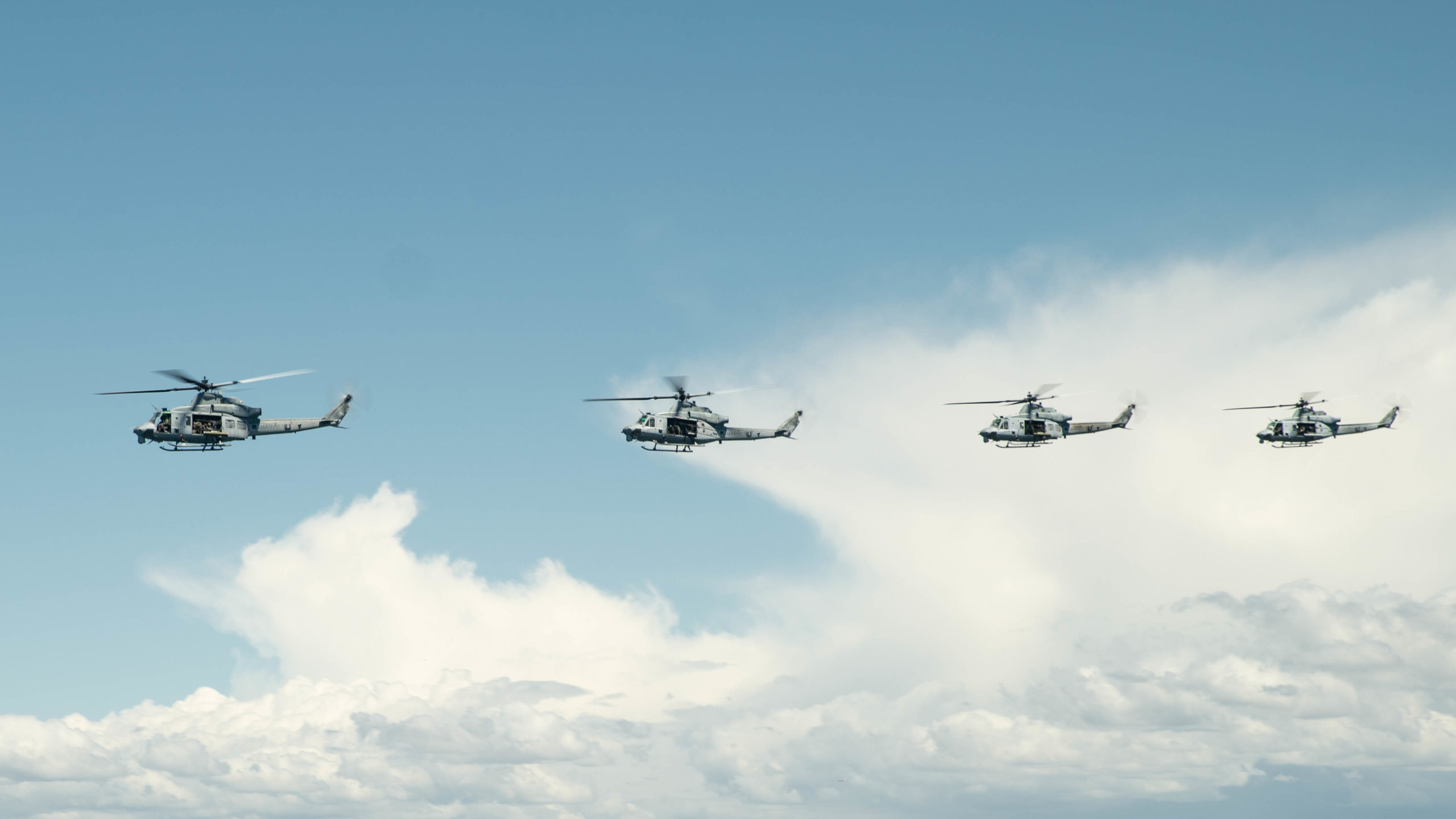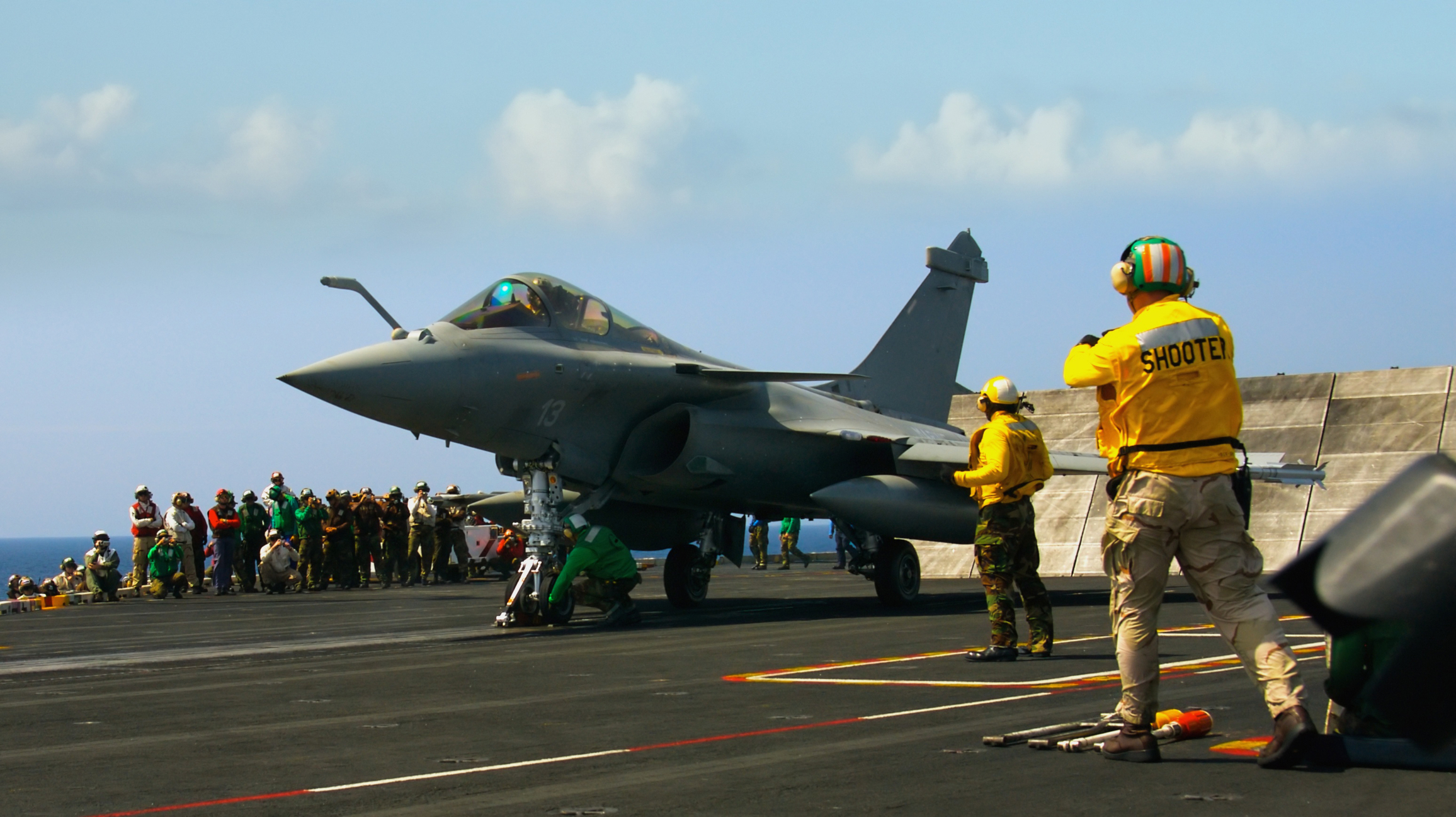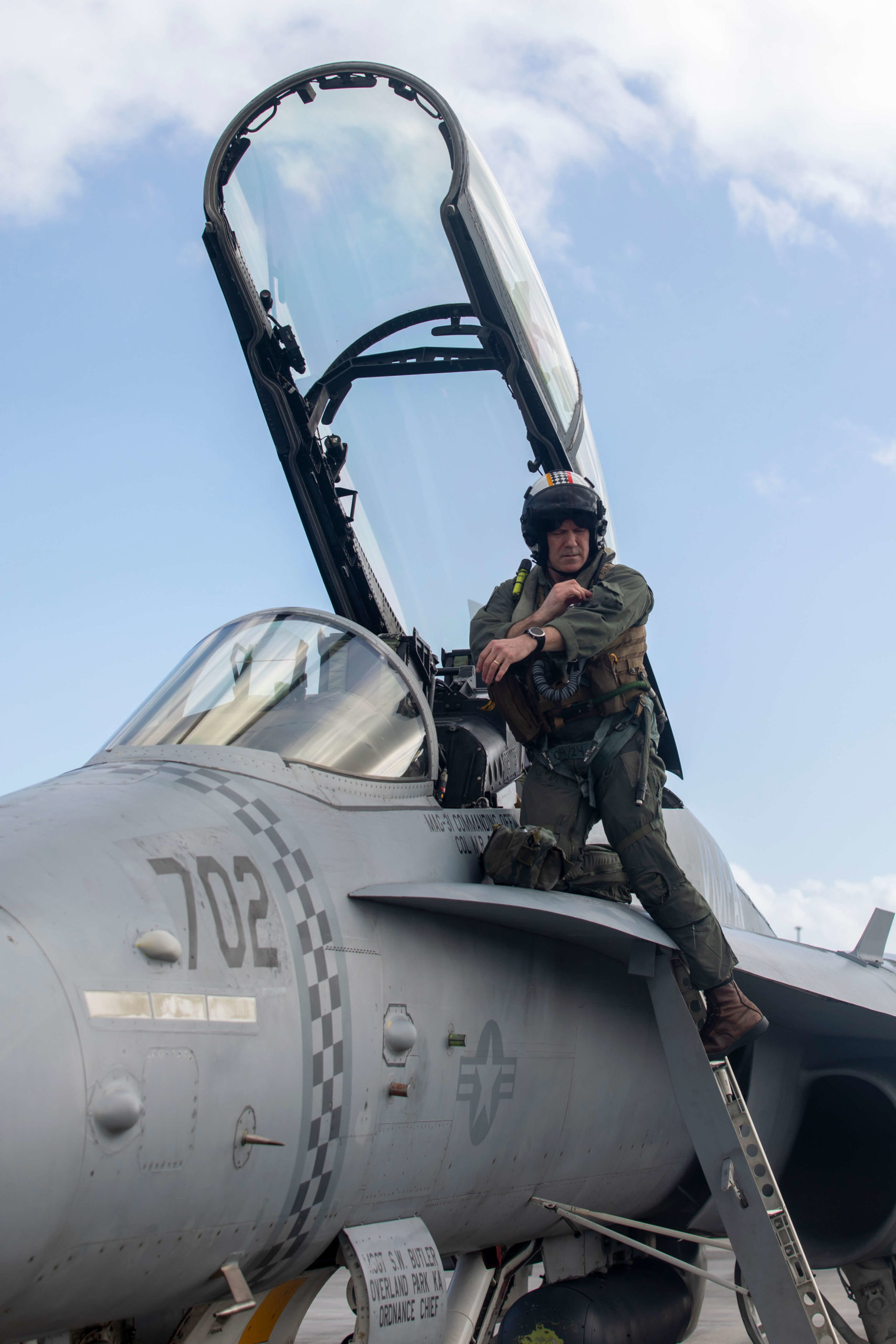The Marine Corps Aviation Association (MCAA) 2025 Symposium is going on this week from May 12 through the 15h in Dallas Texas.
We are publishing a piece highlighting the role of one of the somewhat undervalued aviation capabilities which the Marine Corps operates today, namely the H-1 helicopters.
By Allen Grinalds
In the opening hours of Operation Iraqi Freedom, one of the first enemy targets was an Iraqi command and control site at Safwan Hill, near the Line of Departure. Armed with unguided rockets, U.S. Marine Corps (USMC) AH-1 Cobra attack helicopters closed to within 800 meters.
At 3:00 AM on a moonless night, the operation carried substantial risk of our Cobras taking both hostile and friendly fire—with multiple ground and air units from U.S. and allied forces all maneuvering and shooting at the same time. Despite the considerable hazards, we accomplished the mission unscathed.
Fast forward to today, and the capabilities of those same H-1 rotorcraft—the AH-1Z Viper and the UH-1Y Venom—are continually being transformed to the point that someday soon we will be able to take out a target like the one at Safwan Hill from over 150 miles away with a single precision-guided missile.
That ability to “reach out and touch someone” becomes even more important when considering the vast distances involved in the Indo-Pacific theater. The 2025 Marine Aviation Plan underscores the importance of delivering sustained fires with the extended reach and lethality that Combatant Commanders need on the battlefield today.
An essential contributor to the Marine Air Ground Task Force (MAGTF) and its Aviation Combat Element (ACE) is its complement of H-1 helicopters, which perform all six functions of Marine Aviation to include Offensive Air Support (OAS), Anti-Air Warfare (AAW), Assault Support, Air Reconnaissance, Electronic Warfare (EW), and Control of Aircraft and Missiles.
In the early 2000s, investments were made to ensure the H-1s kept pace with the evolving threats on a modern battlefield. Now, over two decades later, we again need to make investments in the Structural Improvement Electrical Power Upgrade (SIEPU) to keep USMC H-1s ready and relevant across the full range of operations for the next decade.
The H-1 Today
The H-1 is fully integrated into the Marine Corps concepts of operation, but like any aircraft, it has limitations that prevent a more lethal pairing with evolving technologies throughout the force.
In some cases, fifth generation fixed-wing aircraft cannot engage certain target types without exposure to the enemy’s radar-guided anti-air assets. Current H-1 aircraft could compensate for this shortfall through exploitation of the low-altitude deficiencies of enemy radar systems. However, today’s H-1 rotorcraft must maneuver dangerously close to enemy forces to be able to do so.
The H-1’s shortfalls in state-of-the-art electronic warfare protection, sensor capabilities, advanced self-defense capabilities, and weapon system integration expose H-1s to both radar-guided and advanced infra-red (IR) surface-to-air missiles; preclude the use of net-enabled weapons; and as a result place H-1s at risk as they must close within enemy weapon engage zones to detect, recognize, and identify enemy targets. These vulnerabilities prevent operational commanders from integrating H-1s into high-threat operations and allow our adversaries additional room to impede the Combatant Commander’s operational plans.
Increased Electrical Power Generation Enhances Survivability and Lethality
The Marine Corps is turning to SIEPU to upgrade Venom and Viper combat performance, address shortfalls in electrical power generation, and make needed structural improvements to the Venom’s cabin. The components of SIEPU include:
- Improved electronic warfare systems;
- More capable and reliable communication sharing of information, voice, and data across networks;
- Integration of advanced weapon systems and data links; and
- Improved defensive systems.
These SIEPU improvements will directly address many of the H-1’s current limitations by providing advanced protection against both radar-guided and IR-guided missiles, allow H-1s to receive enemy target locations from third-party platforms such as the F-35, and enable the use of precision weapons with ranges up to ten times greater than those currently employed. With SIEPU improvements, H-1s can be safely integrated into high-threat operations with the ability to engage enemy targets from locations undetectable to the enemy.
The SIEPU program will not only increase H-1 lethality and survivability but will also provide a synergistic improvement to U.S. warfighting capabilities by allowing both our Fixed Wing and H-1 assets to operate from tactical sanctuaries where our enemies are either unable to detect, or unable to engage, our aviation strike packages. In essence, the SIEPU program will allow Combatant Commanders to overcome tactical advantages currently enjoyed by our adversaries. To that end, the Marine Corps has incorporated SIEPU into its recently released Aviation Plan, which notes:
“Every investment in H-1s over the next two FYDPs is essential to maintaining a ready crisis response force, pivotal to reduce risk in the development of H-1 Next, and critical to bridge the gap for the Marine Air Ground Task Force (MAGTF) as it transforms into a fully modernized fleet.”
SIEPU in Action
Imagine a SIEPU-equipped force scenario: fifth generation fixed-wing assets find, fix, and track enemy weapons systems while remaining outside the range of adversary anti-aircraft weapons systems.
At the same time, SIEPU-equipped AH-1Zs and UH-1Ys take up long-range firing points while remaining undetected, flying under enemy radar resolution cells. Fixed-wing aircraft target the enemy weapon systems and digitally pass the target locations to Venom and Viper helicopters poised to provide fires on unsuspecting enemy forces from an unanticipated vector.
Enabled by the SIEPU program’s upgraded electrical power generation, improved processing capabilities and enhanced weapons carriage, the Vipers and Venoms will be capable of engaging land-based enemy positions from extremely long distances with missiles that can track moving targets and simultaneously engage enemy unmanned aerial systems and other kinetic munitions that threaten U.S. forces with net-enabled air-to-air weapons.
This type of platform pairing will present a thorny problem for the enemy: they can “see” but cannot target fixed-wing aircraft while undetected H-1 aircraft at standoff range launch devastating effects.
H-1 Upgrades Will Maintain Overmatch
The H-1s were outfitted from inception with advanced sensors and weapons, and fully integrated cockpits, but they were not equipped with digital communications or network capabilities to fully realize their capabilities.
SIEPU is not the only upgrade program underway for the H-1. Other initiatives like Digital Interoperability and MAGTF Agile Network Gateway Link integration, combined with the employment of net-enabled precision munitions, will further allow the Marine Corps to fill mission and capability gaps.
These H-1 upgrades provide essential increases in survivability, lethality, and situational awareness. More importantly, they provide Combatant Commanders with an asymmetric advantage that our adversaries can neither duplicate nor counter.
An investment in the SIEPU program will send a clear message to our adversaries that America is serious about preserving our warfighting advantage and remains committed to deterring conflict in a complex global environment. And, if conflict comes, we will prevail.
LtCol Allen Grinalds, USMC (ret.) served as an AH-1 Cobra pilot with tours including MAWTS-1 in Yuma, AZ, H-1 Plans Officer at the Pentagon, commanding officer of HMLA-269 in New River, NC, and combat deployments to Iraq and Afghanistan.

The views expressed in this piece are the sole opinions of the author and do not necessarily reflect those of the Center for Maritime Strategy or other institutions listed.
First published April 3, 2025 in The MOC, Center for Maritime Strategy
Featured image: U.S. Marine Corps UH-1Y Venoms attached to Marine Medium Tiltrotor Squadron (VMM) 165 (Reinforced), 15th Marine Expeditionary Unit, fly in formation before embarking the amphibious assault ship USS Boxer (LHD 4) in the Pacific Ocean April 1, 2024. Elements of the 15th MEU are currently embarked aboard the Boxer Amphibious Ready Group conducting routine operations in U.S. 3rd Fleet. (U.S. Marine Corps photo by Cpl. Amelia Kang)
This article is republished with the author’s permission.
Earlier, we published a piece highlighting the ahead with the H-1 and its contribution to the evolving kill web capabilities of the USMC as they evolve their concepts of operations within the joint force.








